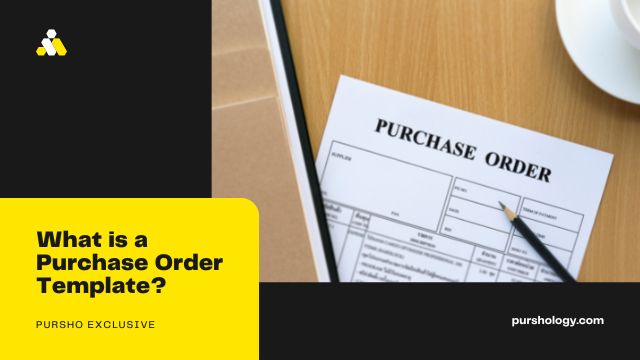You’re here because you’re looking for a purchase order template to make your life easier.
Well, here are 5 different templates in different formats which you could use:
- Purchase order template in Excel
- Purchase order template in Google Sheets
- Purchase order template in Word
- Purchase order template in Google Docs
- Purchase order template in PDF
If that’s all you need, pick the one in the format you prefer, and have a great day.
However, if you didn’t already have a purchase order before you came to this article, then you probably didn’t and still don’t have a system for your purchase orders.
The system is more important than the template.
In this article, I’ll do a quick explainer of your options for systemizing your purchase order and tying it into the rest of your accounting activity.
Systemizing it will save you time and effort in the future. So it’s in your interest to check out some of the options.
What is a purchase order?
A purchase order is a document from a buyer to a seller which explains what the buyer wants to buy in clear and accurate detail.
It’s as simple as that.
The purchase order acts as a way to communicate the desired purchase.
It also works as evidence that two parties want to do business with each other and is the first step in building a documented agreement that will eventually be legally binding via a contract.
The purchase order should contain the necessary detail for the product or products in question.
This means that one purchase order might not always be sufficient for every purchase – sometimes you’re buying products, other times maybe services. You’ll need to describe these things accurately.
In simple terms, it should include:
- Who is buying?
- Who is selling?
- Who represents the buyer?
- Who represents the seller?
- What are you buying?
- How many are you buying?
- What are the details of the items? – size, color, model, etc
- How much are you paying?
- Is there a discount being applied?
- When are you sending this purchase order?
- When do you want to receive the goods/services?
- What are the business addresses of the two parties?
- What are the delivery addresses, if they differ?
- How can each party be contacted?
- What is the total amount of money exchanging hands?
It’s all the simple stuff that you should already know and have to hand.
It’s not complicated, but it’s important to make sure you’ve included all this information.
What is a purchase order workflow?
A purchase order workflow is a bigger look at what happens before and after a purchase order is sent.
What tasks need to get done to send a purchase order?
What tasks need to get done once a purchase order has been sent?
It’s best to have a standardized flow in place for purchases that your organization makes. This standardized approach can mean that all purchases receive the correct amount of scrutiny, pass off on approval from the right people, and stay within pre-decided budgets.
A solid workflow means all necessary checks are undertaken.
What Does a Purchase Order Include?
A basic purchase order features the following elements:
- Buyer: Name, address, and contact information of the party paying for the goods.
- Seller: Name, address, and contact information for the party accepting payment for the goods.
- Purchase Order Number: A unique identifier is assigned to each purchase order for easy tracking.
- Order Information/Item Description: The details, quantity of goods, unit price, and total cost of goods.
- Shipping Address: Where the goods will be shipped.
- Shipping Date: When the goods will be delivered to the final location
- Billing Address: Where the seller should send the invoice for payment so the buyer can make payment
- Signatures: Each purchase order should contain at least two signatures: one (or more) for the person or people authorizing the purchase on behalf of the business and one (or more) for the person or people accepting the order on behalf of the seller.
- Order Date: The date on which the business transaction occurred.
A purchase order may also be referred to as a PO or a contract purchase agreement. The buyer may also be referred to as the vendee, purchaser, or customer. The seller may also be referred to as the vendor or supplier.
The PO must identify:
- What is being purchased and how many or how much
- Where the goods are being shipped
- Payment terms – when the payment should be made and for how much
- Who the buyer and seller are in this particular transaction
It’s also a good idea to include other details, such as:
- Currency: Will the goods be charged and paid for with U.S. dollars or another foreign currency?
- Payment Method: Will the buyer pre-pay, pay in cash, or use a credit card, or a check?
- Delivery Method: How will the goods be delivered? Who is the carrier? Will they be delivered by courier or picked up?
- Shipping Costs: The cost associated with packing and sending the goods to the buyer.
- Which Party is Paying Shipping Costs: This should be decided ahead of time. Shipping costs should only be entered when the buyer is paying for shipping. Use a carrier calculator, provided by USPS, UPS, and FedEx to estimate the shipping costs based on package weight.
- Shipping Information/Tracking Number: Like the PO number, this is a unique identifier that’s used to track the progress of goods delivered. It’s provided by the seller when they ship the items and updated as it makes its journey from the seller to the buyer.
- Insurance: Will the seller insure the goods to protect both parties in the event the package is lost or damaged?
- Terms and Conditions: Any fine print regarding whether or not goods can be returned or what will happen and who is responsible if items are lost or damaged during delivery. If goods can be returned, indicate the return time frame and whether or not the buyer will pay a restocking fee or return shipping fee.
- Governing Law: By default, the seller’s state laws will apply.
When You Need Purchase Orders
The PO is most commonly used in more sophisticated business transactions. If you’re buying a high volume of goods, or many types of products, it’s a good idea to use the document to formally document the purchase.
Since these are legally binding, buyers can use them as a formal paper trail – even if they’re opting for e-procurement solutions that offer electronic POs. This official record keeping helps the finance and inventory departments keep track of orders placed, items received, and inventory.
Summing it up!
Breeze through all your document hassles with the management system. With a document management system, you will focus more on the quality and content of your documents and not on how to create and manage them.




